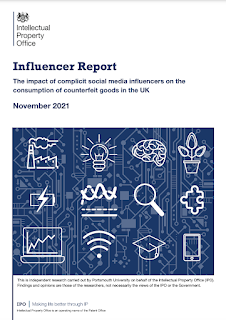UKIPO unveils report highlighting influence of social media influencers (also) on the purchase of counterfeits

Last week, the UK Intellectual Property Office (UKIPO) released an intriguing report measuring and analyzing (apparently for the first time) the influence that social media influencers exert on consumers also when it comes to purchasing counterfeits. This kind of research is timely, also considering – among other things – recent initiatives in which brand owners and Amazon joined forces to bring judicial proceedings – now settled out of court – in the USA against influencers over the advertising, promotion and facilitation of sale of counterfeits on the latter’s platform through the influencers’ own accounts on Instagram, Facebook, and TikTok, as well as their own websites. The findings The UKIPO’s findings are based on a quantitative survey of 1,000 female (studies suggest that influencer marketing is “ highly gendered ”) consumers in the UK, aged 16 to 60 and who use social media at least once per week. In addition, the notion of ‘counterfeit’ was taken to refer to “ items







